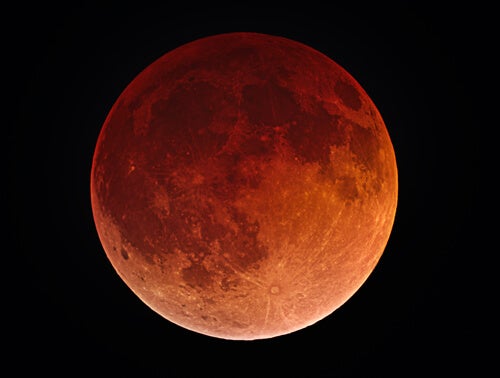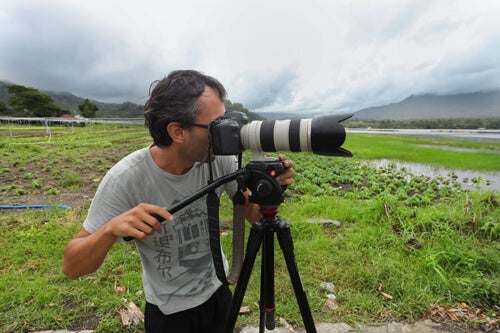Skygazers are in for a great treat this weekend. Not only will there be a lunar eclipse, but it will happen on top of a “super blood wolf moon”. It’s all going down on Sunday, January 20th. If you think you are going to capture this cosmic event on your smartphone, you’re going to be disappointed. Here are five tips to get the best photographs of the super blood wolf moon and lunar eclipse.

Lunar Eclipse: Takes place when the Earth lines up between the sun and moon, blocking the sun’s light and casting a shadow on the moon’s surface. It only happens during full moons.
Supermoon: This happens when the full moon is at the closest point of orbit to the Earth. That’s why it looks bigger, brighter and larger.
Start with the right lens. Anything under 200mm will make your moon look like a speck in the sky – the longer the lens the better. In otherwords, you want to close the distance between you and the moon.

The tripod is your best friend. Just like shooting fireworks, you’ll need to stabilize your camera. When you are using heavier lenses, you’ll need the tripod to not only keep take the weight off your hands but to ensure a clear, crisp sharp photo. Any type of movement can result in a blurry or soft picture.
Just like the tripod will help ensure a sharper image, so will a remote or camera trigger. If you push the shutter, you can easily bump or move the camera causing a blur effect. If you are looking for the optimal sharp image, a tripod and camera trigger will are your best bet.
Make sure you find a clear view of the moon. Light pollution or the wrong timing can mess up your shot or not give enough time to adjust. According to Sky and Telescope, here are the times you can view the lunar eclipse in your time zone.
Start on Manual mode and bracket your exposure. Typically, if you are just photographing the moon with no foreground, then you’ll need to expose for the moon. If you want to be more advanced and get some foreground in the shot as well, I found this great tutorial on Digital Photo Secrets on how to merge the foreground and the moon. Next, set your ISO to the lowest you can whether it’s 100 or 200. The lower the ISO the more crisp your photo will turn out. According to the photography life website, you should set your aperture to f/11 and your shutter speed to 1/125 on cameras with base ISO 100, and to 1/250 on others with a base ISO of 200. This will net you the best results. That’s not to say you shouldn’t experiment this is just a good base to start from.
If you miss the big lunar eclipse event you’ll need to wait a bit for the next one which will happen on May 26th, 2021.
Professional recommendation for printing: Metal Prints – White, Metal, Glossy.